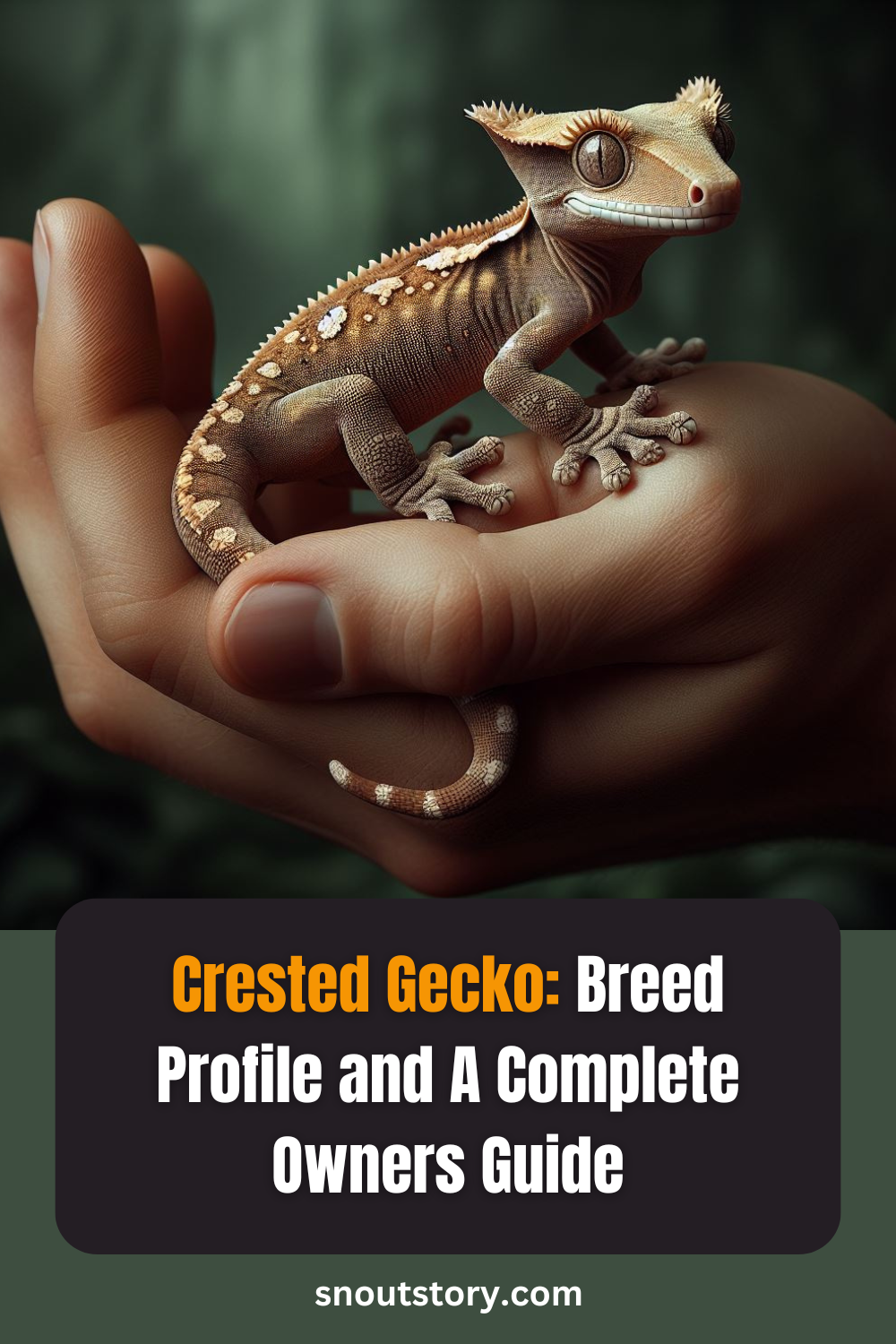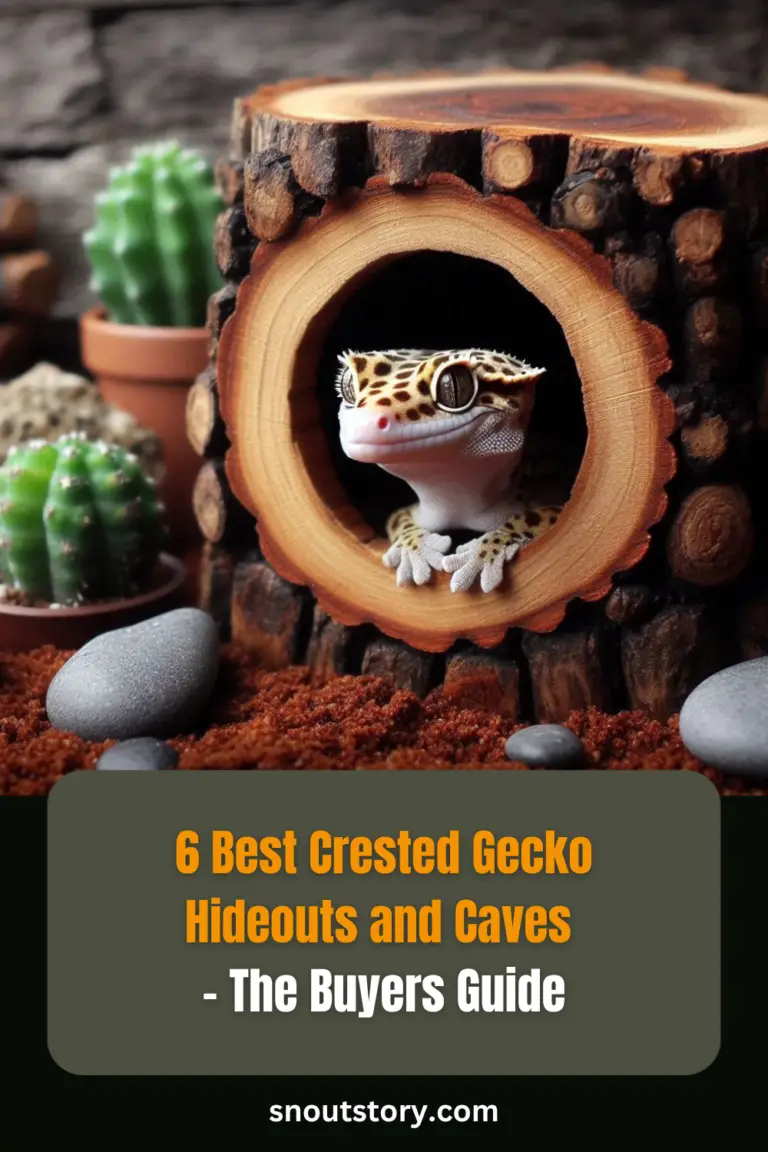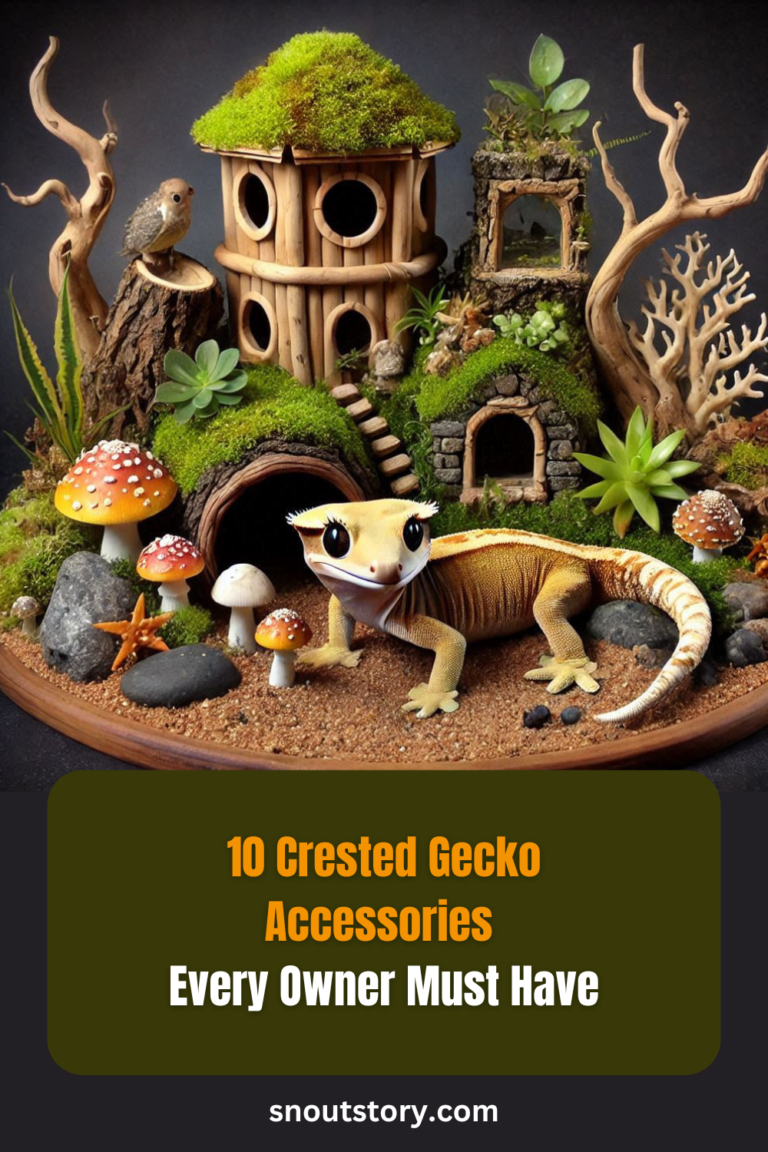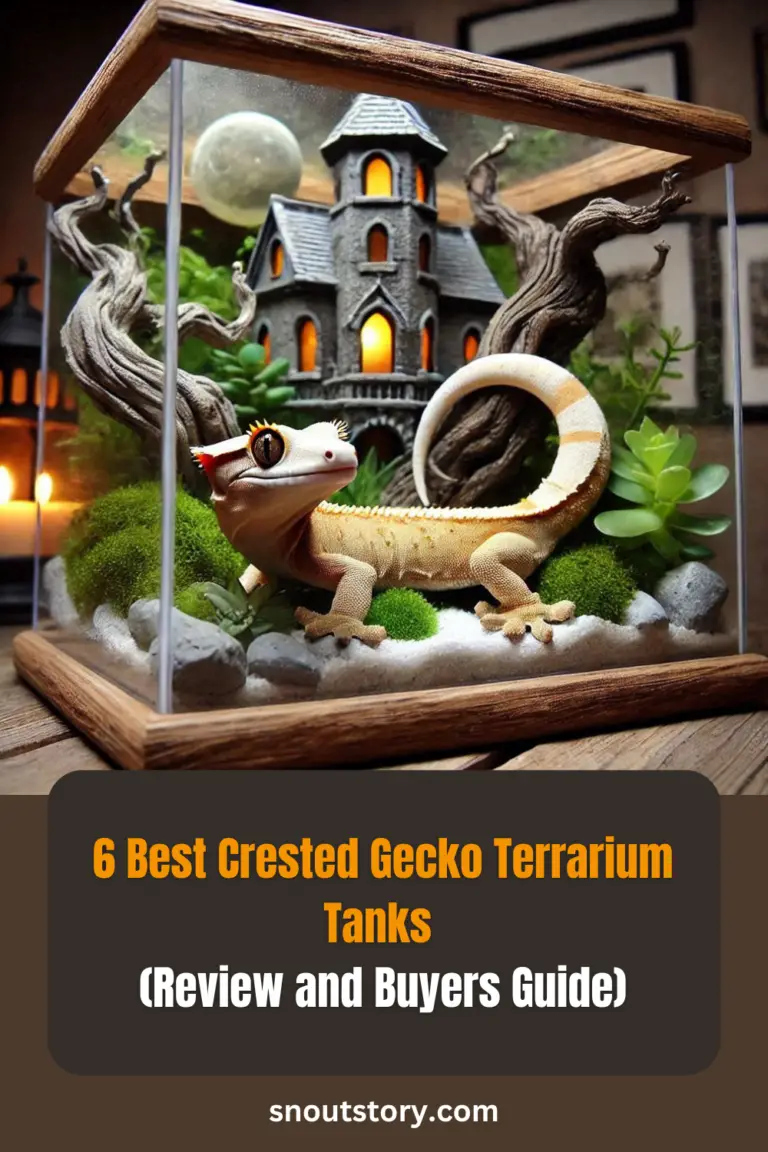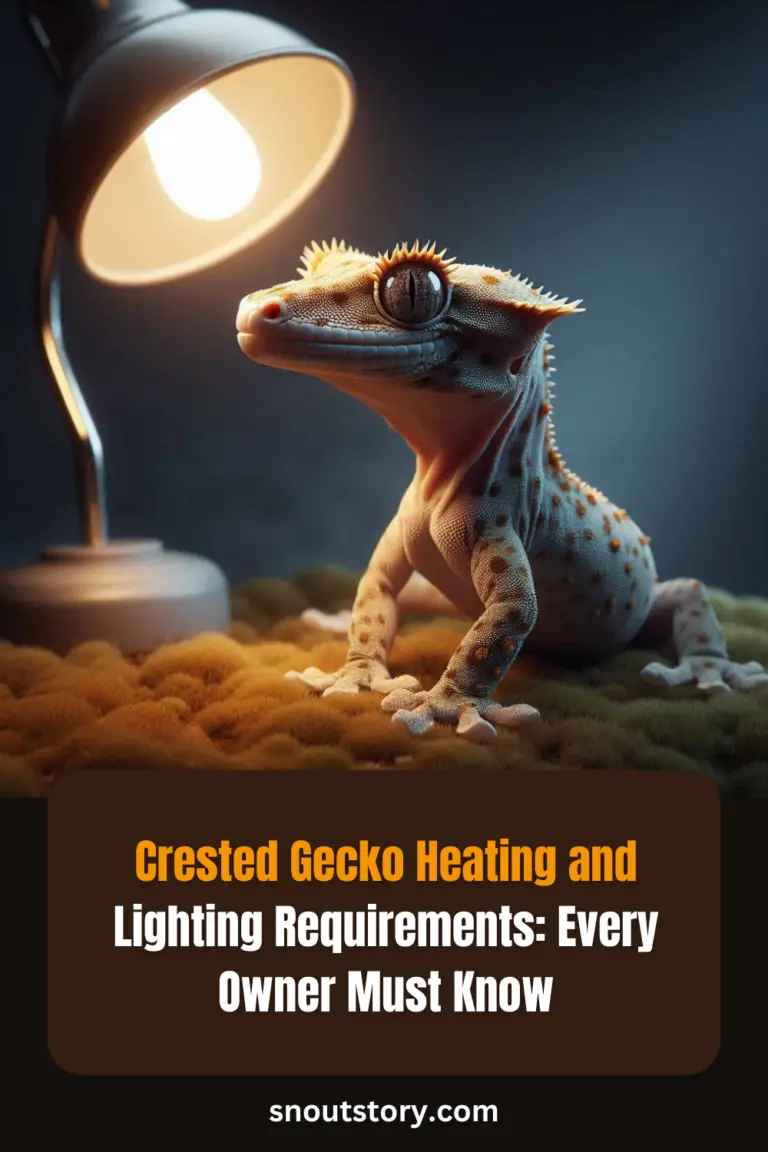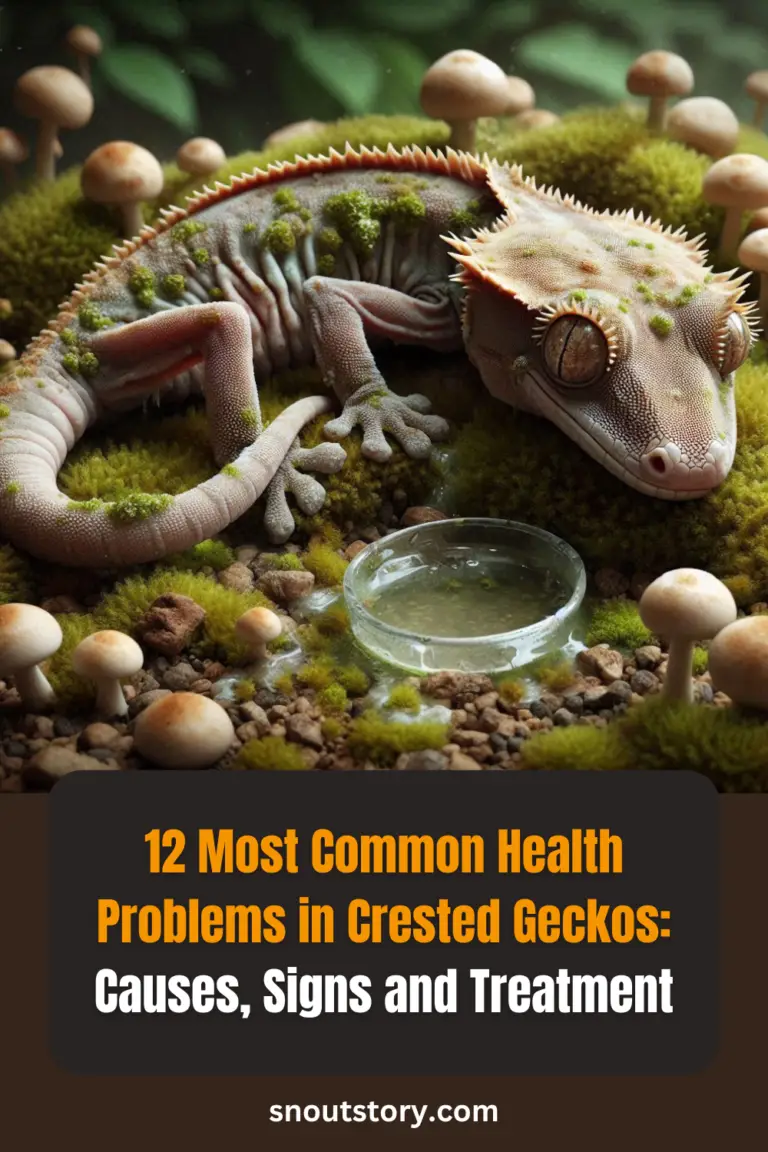Disclaimer
“This Blog is completely reader supported, for any purchase you make from affiliate links on this blog we earn a small commissions with no extra cost to you, which I use to feed my poor puppies 🥺”
Hello fellow reptile keepers, lets together learn everything about the Crested Gecko, a vibrant and unique reptile that has charmed pet enthusiasts worldwide. Originating from the lush rainforests of New Caledonia, this striking creature is not only visually appealing with its varied colors and patterns but also renowned for its manageable care requirements, making it an ideal choice for both novice and experienced reptile keepers.
In this comprehensive guide, we’ll explore everything from their intriguing origins and distinct physical attributes to their dietary needs, habitat setup, and essential care tips.
So, whether you’re considering adding a Crested Gecko to your family or simply eager to learn more about this fascinating species, this guide will provide you with a wealth of knowledge to understand and appreciate these extraordinary reptiles.
Understanding Crested Gecko Origins and Natural Habitat
Crested geckos, originally discovered in the lush forests of New Caledonia, thrive in environments that mimic their natural habitat. These fascinating reptiles were once thought to be extinct but reappeared in the pet trade in the 1990s, sparking interest among herpetologists and enthusiasts alike.
If you’re looking to recreate a slice of their world, focus on maintaining a humid, temperate setting with plenty of vertical space for climbing. This isn’t just about aesthetics; it’s crucial for their health. A well-set-up enclosure includes live plants, which boost humidity and provide natural hiding spots, mimicking the dense foliage of their home. The use of coconut fiber or moss as substrate supports necessary humidity levels while reducing the risk of dehydration and stress, common issues for these creatures in captivity.
Engaging with a Crested Gecko in an environment that reflects their natural ecosystem can dramatically enrich their lives and promote natural behaviors, making your experience as an owner even more rewarding.
Physical Characteristics: What Makes Crested Geckos Unique
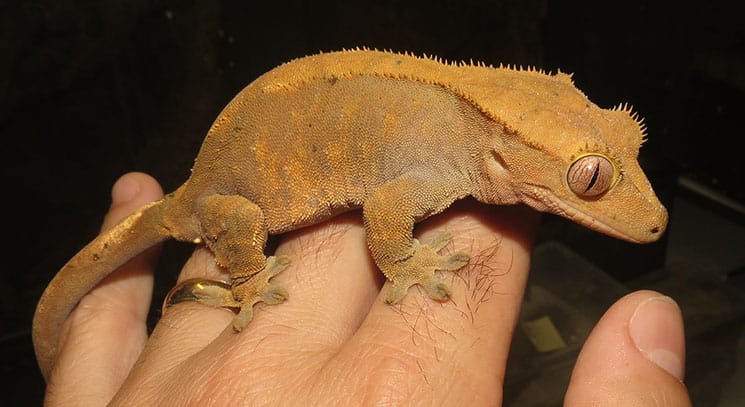
Crested geckos are easily recognized by their distinctive physical features, which not only contribute to their popularity as pets but also to their survival in the wild. The soft, spiny crests that run from their eyes to the base of their tails, resembling a crown, give these geckos their name.
Their skin texture, which can vary from smooth to slightly bumpy, along with a wide range of colors and patterns, makes each one uniquely striking. What truly sets them apart, however, is their ability to “jump” using their strong, muscular hind legs, and the lamellae on their toes enable them to climb smooth surfaces effortlessly.
For pet owners, this means providing an environment with ample vertical space and various textures to climb is not just a luxury, but a necessity for their wellbeing. Additionally, their prehensile tails, which can be shed and regrown, add to their uniqueness, though a regenerated tail often lacks the original’s structure and appearance.
Understanding these key characteristics can help you create a more engaging and suitable habitat that caters to their natural instincts and behaviors.
Dietary Needs: What to Feed Your Crested Gecko
Understanding what to feed your crested gecko is crucial for its health and longevity. These small reptiles flourish on a diet primarily consisting of commercial crested gecko food, which is formulated to provide a balanced mix of nutrients, mimicking what they would eat in the wild. This premixed diet simplifies feeding and ensures they receive the right amounts of vitamins and minerals.
here are some of the best crested gecko foods that we would like to recommend
1. Pangea Fruit Mix with Insects Crested Gecko Complete Diet

2. Gargeer 8oz Complete Crested Gecko Food Diet. Premium Ingredients Mix, Ready to Use Freshly Made Powder

However, for dietary variety and enrichment, you can occasionally introduce live insects like crickets or dubia roaches, which should be dusted with a calcium supplement to prevent nutritional deficiencies. It’s also beneficial to offer fruits like mashed bananas or pureed peaches in small amounts as a treat.
Always remember that fresh water should be available at all times, and it’s essential to maintain clean feeding dishes to prevent the growth of bacteria. Engaging your crested gecko with a variety of foods not only caters to their nutritional needs but also stimulates their natural foraging behaviors, making mealtime both enjoyable and healthful.
Crested Gecko Enclosure Requirements: Setting Up the Perfect Enclosure
Setting up the perfect enclosure for your crested gecko involves more than just aesthetics; it’s about creating a secure, comfortable environment that mimics their natural habitat. Start with choosing a vertically oriented terrarium—this reflects their arboreal lifestyle, allowing them to climb and explore.
The enclosure should be equipped with branches, vines, and foliage to provide ample climbing opportunities and hiding spots, which are essential for their sense of security. Temperature control is crucial; maintain a gradient from 72 to 80 degrees Fahrenheit, and avoid placing the terrarium in direct sunlight to prevent overheating.
Humidity levels should also be carefully monitored and kept around 70-80%, with regular misting to maintain these levels and support their hydration and skin shedding process. Substrate choice is another key factor; coconut fiber or moss are ideal for retaining moisture and facilitating cleanup.
Remember, the goal is to replicate their natural conditions as closely as possible, which not only promotes physical health but also enhances their overall wellbeing, ensuring your crested gecko feels at home.
Health and Wellness: Common Health Issues in Crested Geckos

Crested geckos are generally hardy pets, but like any animal, they can face health challenges that owners should be aware of:
- Metabolic Bone Disease (MBD): This is a common issue resulting from inadequate calcium or vitamin D3. To prevent MBD, ensure your gecko’s diet is supplemented with calcium and their enclosure has appropriate UVB lighting.
- Respiratory Infections: Symptoms include wheezing or mucus around the nose and mouth. These are often caused by low temperatures or excessive humidity. Regularly monitor the enclosure’s climate to keep conditions optimal.
- Skin Problems: Incomplete shedding can lead to skin irritation or infection. This can be mitigated by maintaining proper humidity levels and providing rough surfaces that help geckos shed their skin completely.
- Impaction: This occurs when indigestible material blocks their digestive tract, often due to substrate choice. Using fine particle substrates like coconut fiber can help prevent this condition.
Addressing these health concerns proactively involves regular observation of your gecko for any signs of distress or illness, maintaining a well-regulated environment, and consulting with a veterinarian experienced with reptiles if issues arise. A healthy crested gecko is active and alert, with clear eyes and a well-maintained skin, indicating a well-cared-for pet thriving in its environment.
Behavioral Traits: What to Expect from Your Crested Gecko
Crested geckos are known for their docile and easy-going nature, making them excellent pets, especially for first-time reptile owners. Typically nocturnal, they become most active at night when they enjoy climbing and exploring their environment.
During the day, don’t be surprised to find them resting or hiding, as this is their usual behavior to avoid daytime heat and brightness. Socially, while they don’t require companionship from other geckos, they can coexist peacefully if introduced properly and given enough space.
It’s important to handle your crested gecko gently; although they are generally tolerant, sudden movements can startle them, causing them to leap away or, in rare cases, drop their tails as a defense mechanism.
Regular, calm interaction can foster trust, allowing your crested gecko to become more accustomed to handling. Observing these behaviors gives valuable insights into their health and well-being, ensuring they are comfortable and stress-free in their home environment.
Breeding Crested Geckos: Essential Tips and Guidelines
Breeding crested geckos requires careful planning and attention to detail to ensure a successful and healthy reproductive process:
- Health Check: Before you consider breeding, verify that both male and female geckos are in prime health, ideally over 18 months old, to handle the stresses of reproduction.
- Optimal Conditions: Create an environment that mimics their natural habitat with appropriate humidity (50-70%) and temperatures (72-78°F during the day and slightly cooler at night). These conditions help stimulate natural breeding behaviors.
- Nutritional Support: Enhance their diet with high-calcium and vitamin supplements, especially for females, to support egg development and overall health during the breeding season.
- Egg Laying Setup: Provide a lay box with moist sphagnum moss or a similar substrate where the female can deposit her eggs comfortably and securely.
- Incubation Care: Once eggs are laid, incubate them at a steady temperature (about 74-78°F) in a humidity-controlled incubator. Avoid rotating or jostling the eggs as this can harm the developing embryos.
- Post-Hatching Care: Newly hatched geckos should be gently handled and placed in a separate enclosure with appropriate heat and humidity, offering small amounts of food like crushed fruit and insects.
- Monitoring and Adjustment: Regularly monitor the health of the breeding geckos and hatchlings, adjusting care protocols and environmental conditions as needed to maintain optimal health.
This step-by-step approach helps you manage the breeding process from pre-conception to the care of hatchlings, ensuring both the adult geckos and their offspring thrive.
Crested Gecko Lifespan and Long-term Care
Crested geckos are captivating pets with a lifespan that can extend up to 15-20 years if cared for properly, making long-term commitment essential:
- Consistent Habitat Maintenance: Keep their environment clean and well-maintained, with regular substrate changes and tank cleanings to prevent the buildup of bacteria and fungi. This helps avoid health issues and creates a stable environment for your gecko.
- Optimal Climate Control: It’s vital to maintain a stable temperature range of 72-78°F during the day with slight dips at night, and humidity levels around 60-80%. Use digital hygrometers and thermometers to monitor these conditions accurately.
- Balanced Diet: Provide a balanced diet consisting of commercial crested gecko food, which is specially formulated to meet their nutritional needs, supplemented with live insects and occasional fruit treats. This ensures they receive all necessary vitamins and minerals.
- Regular Health Checks: Schedule annual check-ups with a veterinarian who specializes in reptiles. Regular health monitoring helps catch and address potential health issues early, contributing to a longer, healthier life.
- Mental Stimulation: Incorporate climbing structures and foliage in their enclosure to mimic their natural habitat and promote natural behaviors. This keeps them mentally and physically stimulated, crucial for their overall well-being.
- Gentle Handling: While crested geckos can be handled, it should be done gently and infrequently to minimize stress. This enhances their quality of life and can lead to a more sociable and relaxed pet.
By following these guidelines, you can ensure your crested gecko not only survives but thrives throughout its potentially lengthy lifespan, providing years of companionship and enjoyment.
Summary
In conclusion, the Crested Gecko offers a unique blend of beauty, fascinating behaviors, and relatively straightforward care, making it an excellent choice for both novice and experienced reptile enthusiasts.
From their distinctive eyelash-like crests to their ability to climb smooth surfaces, Crested Geckos bring a touch of the exotic right into your living room. Their care requirements, including a diet of commercial gecko food supplemented with insects and fruits, and their need for a humid, temperature-controlled environment, are manageable with a bit of preparation and ongoing attention.
By maintaining proper habitat conditions, offering a balanced diet, and ensuring regular health checks, you can enjoy the vibrant presence of your Crested Gecko for up to 20 years. This breed profile serves as a comprehensive guide to understanding and caring for your Crested Gecko, ensuring they live a healthy and happy life under your care.
Whether you’re looking to explore the world of reptiles or add to your growing menagerie, the Crested Gecko is a captivating and rewarding pet.
Recommended
6 Best Crested Gecko Hideouts and Caves (The Buyers Guide)
6 Best Crested Gecko Foods (Review and Buyers Guide)
10 Crested Gecko Accessories Every Owner Must Have
6 Best Crested Gecko Terrarium Tanks (Review and Buyers Guide)
Crested Gecko Heating and Lighting Requirements: Every Owner Must Know
12 Most Common Health Problems in Crested Geckos: Causes, Signs and Treatment

Vedant Narvekar is an experienced digital marketing expert with a profound love for nature and animals. With a career rooted in leveraging online platforms to drive engagement and promote meaningful causes, Vedant’s passion for animals inspired him to start Snout Story—a blog dedicated to educating people about pet keeping and sharing proper knowledge about caring for animals. Drawing on his expertise in digital marketing, Vedant utilizes his platform to advocate for responsible pet ownership, providing valuable insights on pet care, training, nutrition, and more. Through Snout Story, Vedant aims to empower pet lovers with the information they need to provide the best possible care for their furry companions, while also fostering a deeper appreciation for the natural world and the creatures that inhabit it.

